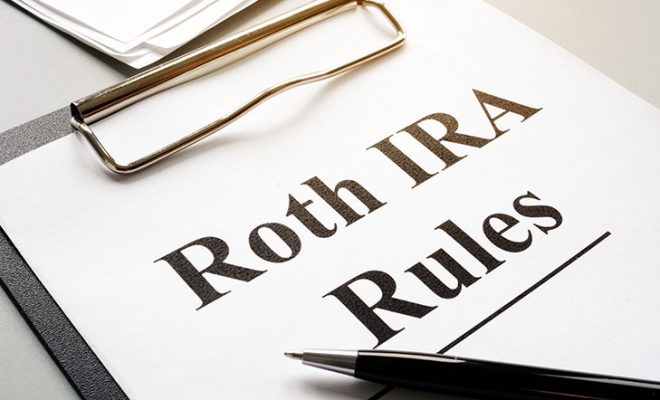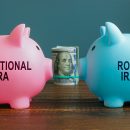Tips to Manage Savings and Investments After Retirement

Every year more and more people retire but with fewer savings than they require for a comfortable retirement. According to recent data, most Americans wish to retire by the age of 67. However, they do not have enough savings to sustain a retired life. In another study by Forbes in 2020, nearly 50% of Americans said that they expect to struggle or are presently struggling with their retirement finances. With more than 10,000 people reaching the age of 65 every day for the next two decades, these figures seem appalling. That said, it is possible to manage your finances better and ensure that you live the golden years of your life to the fullest.
Here are some tips to help manage savings and investments after retirement:
- Be efficient with withdrawalsDuring retirement, you are most likely dependent on money from your retirement accounts and Social Security benefits. With a limited accumulation of funds, you need to be cautious of your withdrawals. As recommended by experts, a retiree should draw only 3-5% of their funds in a year to not outlive their savings. During your retirement years, every penny counts, especially when specific withdrawals attract penalties or tax implications. Each retirement account has different tax laws. Hence, you should be strategic with how and when you withdraw money from your 401(k) account, or an individual retirement account (IRA), etc.
You should also prioritize withdrawing your required minimum distributions (RMDs) from your retirement accounts. The 2019 SECURE Act specified 72 years as the age for RMDs from an IRA or from other workplace retirement plans. But due to the COVID-19 situation, the CARES Act 2020 lifted the RMD specifications for 2020.
Additionally, you can consider a Roth conversion to spread your savings and reduce taxes. However, you must be careful with your annual withdrawals and not exceed your tax bracket. Higher taxes can lower your savings, thus impacting your retirement finances. Further, you can get professional help to delay withdrawing your Social Security benefits and maximize your earnings. Lawfully, you can take Social Security benefits from the age of 62. But keeping money in this account for a long time improves returns. So, it may be better to wait as long as possible before withdrawing your Social Security benefits.
- Be wise with your investmentsWhen living off your retirement income, it is essential to consider that wise investments can go a long way. According to financial experts, you should shift your portfolio investments into more conservative assets, as your retirement age approaches. These may include bonds, annuities, and other market instruments. These financial tools offer a stable income with minimum risk, unlike equities/stocks. However, this needs a prudent approach.
Suppose that your total retirement income portfolio comprises Social Security benefits, a 401(k) account, an IRA, and a pension. Now assume that your earnings from Social Security and pension would be enough to support your retirement lifestyle. This would mean that you could direct more funds, like from a 401(k) account or an IRA, into riskier assets such as stocks, for better returns and yet not compromise your overall risk appetite.
Further, it is advisable to create sources for regular income through your investment choices. For this purpose, you can invest in annuities that offer a stable income flow in retirement. Annuities are a type of an insurance or investment tool endowing you with fixed annual sums, mostly for your lifetime. You could choose a deferred annuity with an in-built income rider for assurance of a fixed, lifetime income stream. Moreover, the increasing pay out feature can help accommodate inflation over time.
- Split your investment assetsA viable tip for managing your savings and investments during retirement is to focus on your assets and structure them wisely. In the pre-retirement era, your investment approach, saving goals, spending habits, and budget plans, etc. were centered on maximizing savings. However, in the post-retirement phase, the goal is to invest and spend your wealth prudently. The objective is to avoid outliving your assets in the long-run. For this purpose, you can ideally divide your assets into three categories – short-, mid-, and long-term. Splitting assets can help you to plan your expenditure and stay within a budget. Your short-term basket could include immediate cash and cash equivalents like short-term bonds to provide a sufficient influx of money for two years or less. In the mid-term category of assets, you can place your semi-liquid assets by keeping a 50-50 ratio of equity and bonds. The mid-term asset class can sustain at least 3-6 years of expenses. Lastly, in the long-term bracket, you could ideally place your assets with a long-term maturity period. In this basket, you can consider investing in stocks that offer higher rewards but at greater risk.
After categorizing these assets, link them with a specific goal in terms of its usage. For instance, the short-term category can be a reserve for general expenses and an emergency fund. The second category can finance your life goals like building a home, traveling, saving for a child’s marriage, and others. The last class consisting of long-term and riskier assets can support the most demanding expenses expected to be incurred in the future. It is beneficial to timely review these assets and understand their returns to streamline your expenses.
- Prioritize and reduce your expensesTo manage savings and investments, it is critical to prioritize and regulate your spending. It is advisable to distinguish discretionary and non-discretionary expenses. Discretionary costs are not essential for daily survival and are related to desires and wants, such as traveling, investing, etc. However, non-discretionary expenses support survival, including food, clothing, etc.
Eliminate all unnecessary outlays like oversized living arrangements. It is wise to revisit your budget and cut all needless expenditure like multiple streamline subscriptions, etc. You can also consider taking up a temporary job. This could help bolster your retirement income. It is wise to maintain a saving mindset after retirement to ensure that your savings last for as long as you live.
- Plan your healthcare costs wellRecent data has found that a fit couple retiring in 2019 at the age of 65 is likely to spend $285,000 in medical expenses post-retirement. This figure is exclusive of long-term care needs. As per reports, 70% of seniors above the age of 65 years can require custodial care at some point in life. With such hefty healthcare costs, only efficient planning can help minimize the burden after retirement. The best way to mitigate spending is by consciously choosing to stay well.
Alternatively, you can choose reliable retirement healthcare investment options such as a Health Savings Account (HSA), Medicare, Medicaid, private health insurance plan, health insurance exchanges, COBRA (Consolidated Omnibus Budget Reconciliation Act), etc. By planning your healthcare costs well, you can easily manage your funds after retirement and not overdraw your budget.
To sum it up
In all, the journey of retirement planning does not end once you retire. Instead, it takes a different form post-retirement. You should create a holistic after-retirement savings and investment plan and consistently adapt it to your prevailing situation. You can also consider hiring professional financial experts to assure financial well-being in your golden years.










